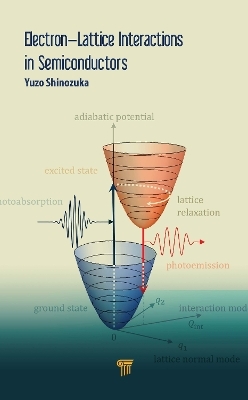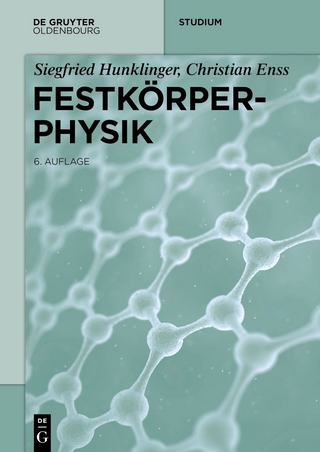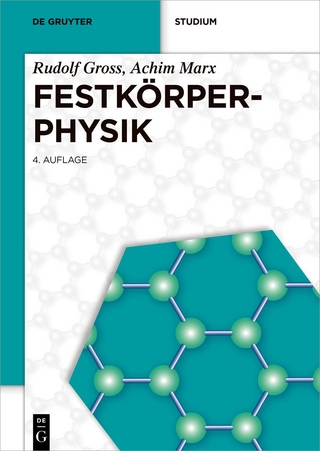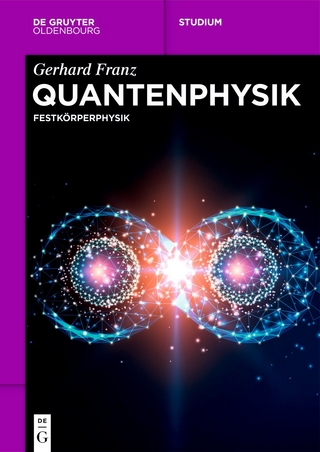
Electron–Lattice Interactions in Semiconductors
Seiten
2021
Pan Stanford Publishing Pte Ltd (Verlag)
978-981-4800-96-9 (ISBN)
Pan Stanford Publishing Pte Ltd (Verlag)
978-981-4800-96-9 (ISBN)
- Titel nicht im Sortiment
- Artikel merken
This book presents theoretical treatments on various electronic and atomic processes in non-metallic materials from a unified point of view. It starts with the basic properties of semiconductors, treating the system as a macroscopic association of electrons and ions. In their ground state, fruitful results are derived.
This book presents theoretical treatments on various electronic and atomic processes in non-metallic materials from a unified point of view. It starts with the basic properties of semiconductors, treating the system as a macroscopic association of electrons and ions. In their ground state, fruitful results are derived, such as the band theory for electrons in a periodic lattice and a useful concept of “hole.” The electron–lattice interaction is then introduced as a dynamical response of condensed matter when it is electronically excited. With the aid of proper configuration coordinate diagrams, various phenomena are precisely examined, including carrier scattering, polaron formation, lattice relaxation, Stokes shift and phonon side band in optical spectrum, intrinsic and extrinsic self-trapping, and structural changes. The book provides readers a deep understanding of the physics underlying these phenomena and excellent insight to develop their further research. Graduate students who have finished the basic study on solid-state physics and quantum mechanics and research scientists and engineers in materials science and engineering will benefit immensely from it.
This book presents theoretical treatments on various electronic and atomic processes in non-metallic materials from a unified point of view. It starts with the basic properties of semiconductors, treating the system as a macroscopic association of electrons and ions. In their ground state, fruitful results are derived, such as the band theory for electrons in a periodic lattice and a useful concept of “hole.” The electron–lattice interaction is then introduced as a dynamical response of condensed matter when it is electronically excited. With the aid of proper configuration coordinate diagrams, various phenomena are precisely examined, including carrier scattering, polaron formation, lattice relaxation, Stokes shift and phonon side band in optical spectrum, intrinsic and extrinsic self-trapping, and structural changes. The book provides readers a deep understanding of the physics underlying these phenomena and excellent insight to develop their further research. Graduate students who have finished the basic study on solid-state physics and quantum mechanics and research scientists and engineers in materials science and engineering will benefit immensely from it.
Yuzo Shinozuka completed his doctoral thesis on “Two Band Model for Nonradiative Multiphonon Recombination at Deep-Level Defects in Semiconductors” from the University of Tokyo, Japan, in 1980.
Perfect Crystal. Electron–Lattice Interaction. Configuration Coordinate Diagram. Localization: Self-Trapping
Electron–Lattice Interactions at Deep-Level Defects. Nonradiative Multiphonon Capture and Recombination Processes. Symmetry Breaking Processes. Stability of Materials and Novel Structures.
| Erscheinungsdatum | 01.09.2020 |
|---|---|
| Zusatzinfo | 8 Tables, black and white; 37 Illustrations, color; 66 Illustrations, black and white |
| Verlagsort | Singapore |
| Sprache | englisch |
| Maße | 152 x 229 mm |
| Gewicht | 612 g |
| Themenwelt | Naturwissenschaften ► Physik / Astronomie ► Festkörperphysik |
| Naturwissenschaften ► Physik / Astronomie ► Optik | |
| Technik ► Elektrotechnik / Energietechnik | |
| Technik ► Maschinenbau | |
| Technik ► Umwelttechnik / Biotechnologie | |
| ISBN-10 | 981-4800-96-1 / 9814800961 |
| ISBN-13 | 978-981-4800-96-9 / 9789814800969 |
| Zustand | Neuware |
| Informationen gemäß Produktsicherheitsverordnung (GPSR) | |
| Haben Sie eine Frage zum Produkt? |
Mehr entdecken
aus dem Bereich
aus dem Bereich


